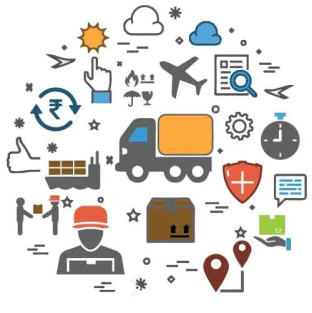Logistics & Transportation sector in India is going through a transformation phase. The industry is expected to grow at 10.5% CAGR and should reach about USD215 billion in 2020. An improvement in India’s ranking on World Bank (WB)’s Logistics Performance Index (LPI) from erstwhile 54th position to 35th also indicates a series of development and improvement of performance in the sector. The industry contributes to about 14% of our country’s total GDP.The Indian logistics sector employs more than 22 million people and growing year by year. The expenditure in on investment in logistics including better infrastructure will touch around USD 500 billion by 2025.
The sector is highly important in better performance of the economy through creation of jobs and influencing exports. It has also been included in the list of ‘Harmonised Master List of Infrastructure Subsector’. Efforts are being made to convert the sector from unorganized to an organized one and a separate division has been created for the sector in Department of Commerce to fuel developments. The endeavours are to identify existing bottlenecks and gaps, improve current processes, reduce costs, manage fleets better, and create improvement through innovation and technological advancement.
The complex working of the industry and its rapid globalization has made it vulnerable to a variety of risks which need to be contained through effective risk mitigation policies. These risks include changing regulations, storage risk, supply chain management risk, risk from competition and dynamic marketplace, etc.


